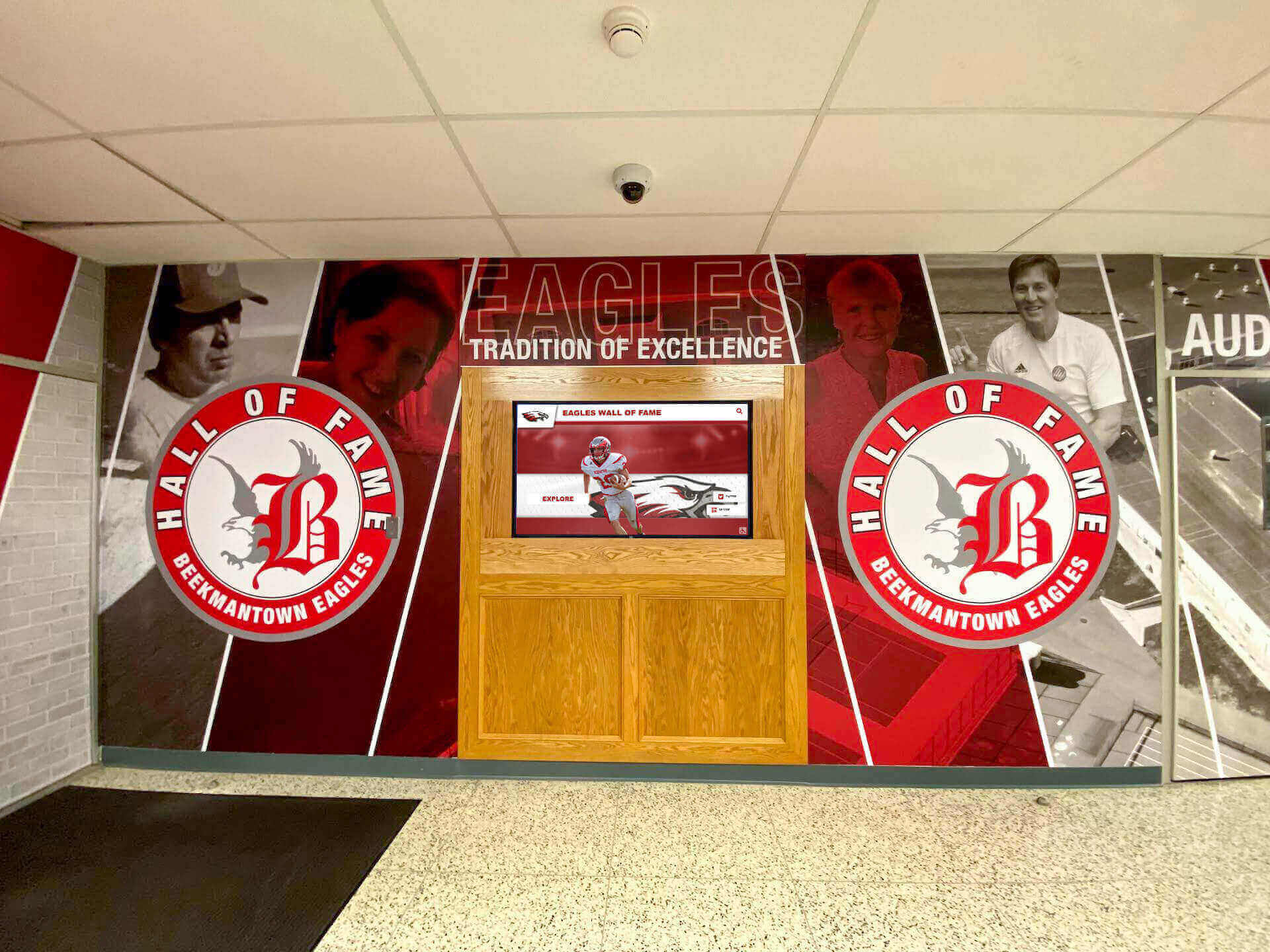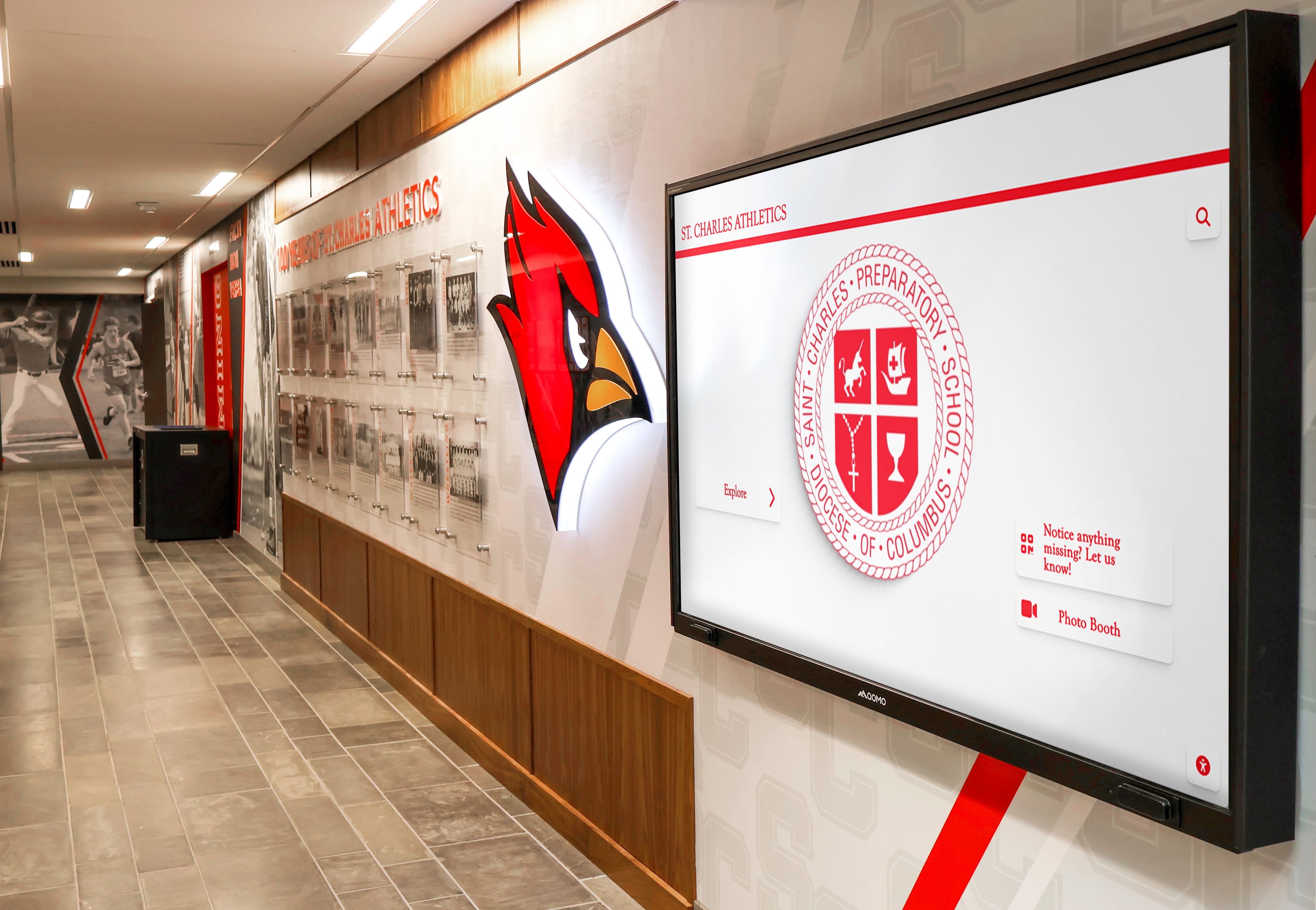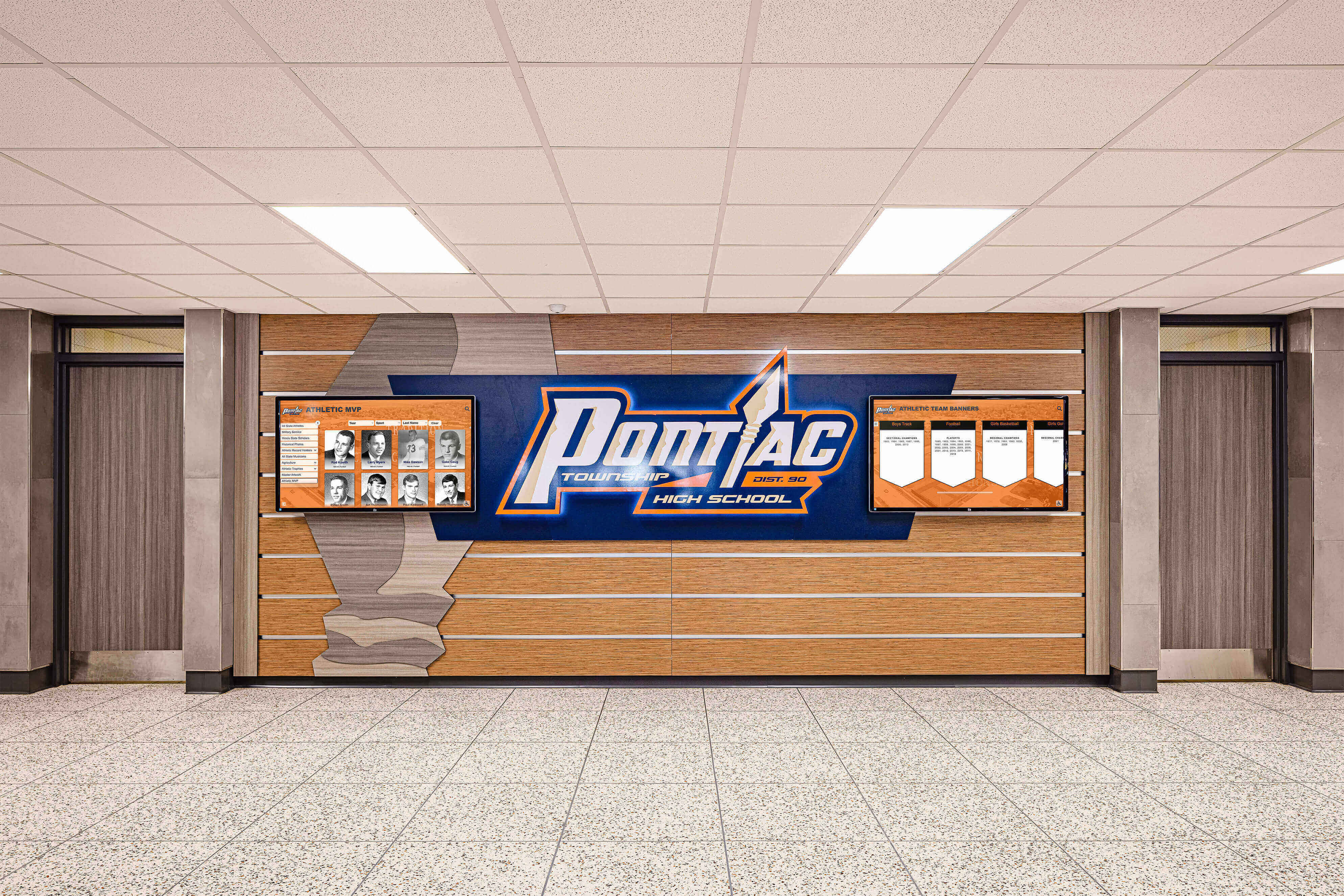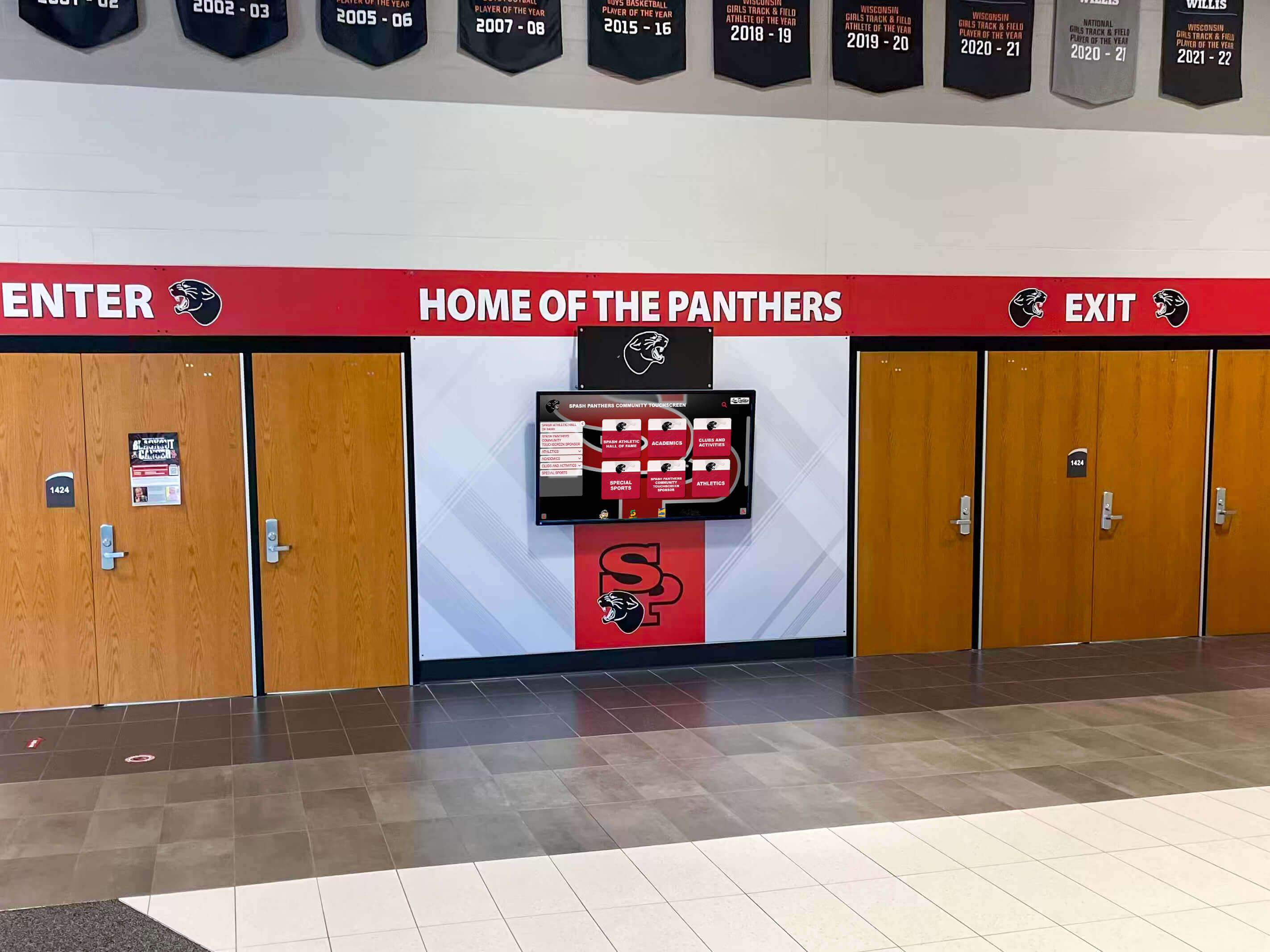Every thriving community has heroes worth celebrating—the volunteers who dedicate countless hours to local causes, the business leaders who invest in economic development, the educators who shape young minds, the first responders who serve selflessly, and the everyday citizens whose contributions make neighborhoods stronger. Yet many communities struggle to consistently recognize these accomplishments in ways that create lasting impact, preserve institutional memory, and inspire continued excellence.
From understanding what makes community halls of fame meaningful through implementing recognition programs that deliver lasting value, this guide provides actionable insights for community leaders, civic organizers, and anyone passionate about celebrating local heroes while strengthening the social fabric that makes communities thrive.
Understanding Community Halls of Fame
Community halls of fame serve unique purposes that distinguish them from other recognition programs while addressing specific community-building needs.
What Defines a Community Hall of Fame
A community hall of fame represents more than simply a list of accomplished individuals—it embodies a community’s commitment to honoring excellence, preserving local history, and inspiring continued contribution to civic life.
Core Defining Characteristics:
Community halls of fame share fundamental elements regardless of their specific focus or organizational structure. They establish clear criteria for recognition based on demonstrated achievement, sustained contribution, and embodiment of community values. They employ structured selection processes ensuring fairness, transparency, and credibility. They provide permanent recognition honoring inductees’ lasting impact on community life. And they create accessible displays making achievements visible to broad audiences rather than limiting recognition to private ceremonies or internal communications.

The permanence distinguishes community halls of fame from annual awards or seasonal recognition programs. When someone enters a community hall of fame, that honor typically endures indefinitely, signaling the lasting significance of their contributions to local quality of life.
Types of Community Halls of Fame
Community halls of fame take diverse forms reflecting different community structures, priorities, and values.
Municipal and Civic Halls of Fame: City and county governments establish halls of fame recognizing citizens whose service, leadership, or contributions significantly improved community life. These comprehensive programs celebrate diverse achievement categories including public service and elected leadership, volunteer contributions to community causes, business innovation and economic development, environmental stewardship and sustainability efforts, and cultural contributions enriching community life.
Municipal halls of fame serve strategic purposes beyond individual recognition—they strengthen civic identity, encourage volunteer participation, preserve local history, and demonstrate that community contributions matter to local government.
Volunteer and Service Halls of Fame: Many communities create specific recognition programs honoring volunteers whose selfless dedication strengthens civic infrastructure. These programs celebrate individuals reaching volunteer hour milestones, demonstrating exceptional service leadership, founding or sustaining community organizations, responding to community emergencies or crises, and mentoring others into community service.
Engaging with your local community through volunteer recognition demonstrates that unpaid contribution receives the same honor as professional achievement or financial support.

Business and Economic Development Halls of Fame: Chambers of commerce and economic development organizations recognize business leaders whose entrepreneurship, innovation, or community investment drives local prosperity. Recognition categories include job creation and economic growth, business longevity and resilience, innovation and industry leadership, community investment and corporate citizenship, and small business success stories inspiring other entrepreneurs.
These recognition programs strengthen business community engagement while demonstrating appreciation for economic contributions that fund public services and create employment opportunities.
Educational and Youth Development Halls of Fame: Community-focused educational recognition extends beyond school settings to celebrate mentors, coaches, tutors, and youth program leaders whose work shapes young people’s lives. These halls of fame honor individuals developing youth leadership, providing educational enrichment beyond school, coaching youth sports and activities, creating safe spaces for young people, and advocating for youth needs and opportunities.
Recognizing youth development contributions validates this essential work while demonstrating community commitment to investing in future generations.
Cultural and Heritage Halls of Fame: Communities with rich cultural traditions or significant heritage preservation efforts establish halls of fame celebrating individuals who maintain cultural identity, preserve historical knowledge, promote arts and cultural programming, document community history, and strengthen multicultural understanding and celebration.
These recognition programs become particularly valuable in diverse communities where honoring varied cultural contributions demonstrates inclusive civic values.
The Purpose and Impact of Community Halls of Fame
Well-designed community halls of fame deliver substantial benefits extending far beyond individual honorees.
Strengthening Civic Engagement: Visible recognition of community contribution correlates with increased volunteer participation, higher civic involvement in local governance, stronger community identity and pride, enhanced attraction of talented individuals who want to live where contributions matter, and improved quality of life for all residents.
Recognition doesn’t simply reward past achievement—it catalyzes future contribution by demonstrating that communities notice and value residents who make differences.
Preserving Community Heritage: Halls of fame function as living archives documenting community evolution through stories of individuals who shaped that journey. They preserve knowledge about significant achievements, historical milestones, and contributions that might otherwise fade from collective memory as time passes and key individuals move away or pass on.
For growing communities experiencing demographic change, halls of fame maintain continuity connecting newcomers to local heritage while honoring long-time residents whose work built community foundations.
Inspiring Current and Future Generations: When young people see role models whose contributions earned lasting recognition, civic engagement becomes concrete rather than abstract. When residents discover neighbors whose quiet work improved community life, participation possibilities expand. When newcomers learn about community heroes, they better understand local values and culture.
The inspirational value explains why many communities position hall of fame displays prominently in high-traffic areas where daily visibility reinforces that achievement leads to lasting acknowledgment.
Planning Your Community Hall of Fame
Successful hall of fame programs require strategic planning addressing recognition criteria, governance structures, technology selection, and sustainable management approaches.
Establishing Recognition Criteria and Categories
Clear criteria ensure hall of fame programs maintain credibility while serving their community-building purpose.
Defining Recognition Categories:
Comprehensive community halls of fame recognize diverse contribution types ensuring various forms of excellence receive appropriate acknowledgment:
- Public Service and Civic Leadership: Elected officials completing significant service terms, appointed volunteers contributing to boards and commissions, advocacy leaders advancing important causes, and citizens demonstrating exceptional civic engagement
- Volunteer Excellence: Individuals reaching lifetime volunteer hour milestones, founding or sustaining community organizations, coordinating major community events or initiatives, and mentoring others into volunteer service
- Business and Economic Contribution: Entrepreneurs creating jobs and economic opportunity, business leaders demonstrating community investment, innovators advancing local industries, and long-standing businesses serving communities across generations
- Education and Youth Development: Teachers and educators shaping young lives, coaches and activity leaders developing youth, mentors providing guidance and support, and scholarship benefactors enabling educational opportunity
- Arts, Culture, and Heritage: Artists enriching community cultural life, cultural leaders preserving traditions, historians documenting community stories, and performers bringing joy and beauty to civic celebrations
- Public Safety and Emergency Services: First responders serving with distinction, emergency volunteers providing crisis response, safety advocates improving community security, and individuals demonstrating extraordinary courage during emergencies
- Environmental Stewardship: Conservation leaders protecting natural resources, sustainability advocates reducing environmental impact, green space developers creating community assets, and educators raising environmental awareness

This breadth ensures that halls of fame honor diverse excellence rather than narrow achievement types, creating inclusive recognition that validates varied paths to meaningful community contribution.
Developing Selection Criteria:
Transparent, well-defined criteria guide recognition decisions while building program credibility. Effective criteria evaluate candidates across multiple dimensions including demonstrated excellence and sustained contribution, measurable impact on community quality of life, embodiment of community values and character, and connection to the local area.
Establish threshold standards that remain consistent over time while allowing flexibility to recognize diverse forms of excellence. Criteria should work equitably across different categories—a volunteer service standard should be comparably rigorous to a business leadership standard even though specific measures differ.
Creating Selection Processes:
Structured nomination and selection procedures maintain fairness while building confidence in program integrity. Key elements include clear nomination procedures specifying who can nominate, required documentation, and submission deadlines; diverse selection committees representing various stakeholder perspectives; documented evaluation protocols ensuring consistent application of criteria; transparent communication about timeline and decision-making; and appeals or reconsideration processes for controversial decisions.
Many programs use multi-year terms for selection committee members with staggered rotations ensuring continuity while regularly refreshing perspectives. Innovative ways to build sense of community include involving diverse constituencies in recognition decisions.
Choosing Recognition Display Formats
The choice between traditional physical displays, modern digital systems, or hybrid approaches depends on community context, priorities, and resources.
Traditional Physical Recognition:
Conventional approaches include plaques mounted in government buildings, engraved brick pavers in community spaces, portrait galleries with printed photographs, and display cases presenting awards and artifacts.
Traditional displays offer tangible permanence and require no technology for viewing. They create ceremonial gravitas through physical materials and craftsmanship. However, they face inevitable limitations: space eventually fills regardless of initial capacity, ongoing costs accumulate for producing new plaques, updates require physical modification creating delays, and static displays provide minimal engagement beyond passive viewing.
Digital Interactive Recognition Systems:
Modern digital recognition platforms address traditional limitations while adding powerful capabilities that enhance community celebration:
- Unlimited Recognition Capacity: Digital systems accommodate unlimited inductees without requiring additional physical space as recognition expands. Every deserving individual receives comprehensive acknowledgment without competing for limited display area.
- Rich Multimedia Storytelling: Platforms enable high-quality photography, video testimonials, detailed accomplishment narratives, and searchable biographical information—storytelling depth impossible with plaques or certificates.
- Interactive Exploration: Visitors search by name, achievement category, or year to discover specific recognition, filter and browse content based on interests, and explore connections between different honorees or time periods.
- Instant Updates: Add new inductees within minutes through intuitive content management rather than waiting weeks for plaque production and installation. Timely recognition provides maximum motivational impact when achievements remain fresh.
- Long-term Cost Efficiency: While requiring higher initial investment, digital systems eliminate recurring fabrication and installation costs while providing vastly superior capacity and engagement.

Solutions like Rocket Alumni Solutions provide purpose-built platforms specifically designed for community recognition with features that generic digital signage lacks—including achievement-specific templates and categories, searchable databases optimized for civic contexts, intuitive content management for non-technical staff, and proven reliability across hundreds of installations.
Hybrid Approaches:
Many communities implement combined strategies preserving traditional elements while leveraging digital capabilities. Hybrid approaches might include maintaining prestigious physical displays for highest-honor recognition, using digital platforms for comprehensive halls of fame documentation, displaying physical certificates alongside digital kiosks providing detailed stories, or implementing traditional recognition ceremonies while documenting achievements digitally for permanent accessibility.
These combinations often satisfy diverse stakeholder preferences while delivering practical benefits that pure traditional approaches cannot provide.
Budget Planning and Funding Strategies
Realistic financial planning ensures community halls of fame remain sustainable while maximizing recognition impact.
Understanding Implementation Costs:
Comprehensive budgets account for all program elements. For digital systems, expect initial costs of $15,000-$40,000 for hardware (commercial-grade displays, mounting, media players), software licensing and implementation, initial content development and migration, professional installation services, and training and documentation.
Annual ongoing costs typically range $2,000-$6,000 for software licensing and support, content updates for new inductees, periodic maintenance and hardware replacement reserves, program management and administration, and annual induction event expenses.
Traditional physical systems may have lower initial costs but accumulate higher ongoing expenses through continuous plaque fabrication and installation, regular maintenance and cleaning, eventual expansion construction, and periodic major renovations as displays age or space fills.
Developing Funding Approaches:
Successful programs combine multiple funding sources including municipal budget allocations from appropriate departments, dedicated fundraising campaigns positioning the hall of fame as a giving opportunity, corporate or individual sponsorships from supporters wanting recognition affiliation, naming opportunities for specific program elements, and memorial giving programs allowing families to honor deceased community members through recognition fund contributions.
Frame hall of fame proposals as strategic investments in civic engagement, heritage preservation, and community pride rather than discretionary expenses. Quantify anticipated benefits around volunteer recruitment, community identity, and civic participation to build compelling business cases for public or philanthropic investment.
Implementing Your Community Hall of Fame
Converting planning into operational recognition requires systematic execution addressing content development, technology deployment, communication strategies, and sustainable management.
Content Development and Honoree Documentation
Compelling recognition requires comprehensive information about inductees presented in engaging, accessible formats.
Gathering Honoree Information:
Different achievement types require different documentation approaches. For civic leaders and public servants, collaborate with municipal records, local media archives, and organizational histories to document service tenures, policy achievements, and community impact. For volunteers and nonprofit leaders, work with organizations they served to quantify contributions, gather testimonials, and document specific initiatives or programs they established.
For business leaders, research company histories, job creation data, community investment records, and industry recognition. For educators and youth development professionals, document students impacted, programs created, and teaching innovations. For cultural contributors, compile performance records, artistic works, exhibition histories, and cultural program development.
Creating Comprehensive Profiles:
Transform raw achievement data into engaging recognition content by including inductee’s full name and relevant dates, achievement category and specific recognition reason, connection to community demonstrating local ties, detailed contribution description explaining what they accomplished, quantified or qualitative impact statements, biographical context explaining background and motivations, photographs showing honorees in action or community settings, video testimonials for major recognition, and personal reflections on community service and values.
Well-written narratives using vivid details and active voice create emotional connections that statistics alone cannot achieve. Strong profiles tell stories rather than listing facts, helping viewers understand not just what honorees did but why their contributions mattered.

Maintaining Content Quality:
Establish standards ensuring all recognition receives comparable professional presentation including minimum information requirements for all profiles, photography quality and styling consistency, narrative length and tone guidelines, verification procedures confirming factual accuracy, and permission protocols for using personal information and images.
Consistent quality demonstrates that all inductees receive equal respect regardless of achievement category or when recognition occurred, building program credibility while honoring recipients appropriately.
Launch and Promotion Strategies
Successful programs require strategic introduction and sustained communication ensuring broad community awareness and ongoing engagement.
Planning Inaugural Induction:
Create memorable launch events celebrating initial inductees through formal induction ceremonies recognizing each honoree individually, speeches from community leaders explaining program purpose and significance, physical display or digital platform unveiling, receptions enabling attendees to celebrate together, comprehensive media coverage amplifying reach beyond ceremony attendees, and social media activation encouraging sharing and engagement.
Well-executed launch events establish program significance while generating momentum that sustains engagement. They communicate that recognition matters to community leadership while honoring initial inductees appropriately.
Sustaining Ongoing Visibility:
Maintain awareness through consistent promotion including regular media features about newly inducted honorees, social media content highlighting specific profiles and achievements, integration into community event programming and civic celebrations, inclusion in newcomer orientation materials introducing community heritage, and periodic anniversary events celebrating program milestones.
Educational outreach helps communities understand nomination processes, selection criteria, and how recognition serves community building. Many residents never consider nominating deserving individuals simply because they don’t know opportunities exist or understand how processes work.
Operations and Sustainable Management
Long-term success requires addressing ongoing content updates, technical maintenance, and program evolution.
Assigning Clear Responsibilities:
Sustainable halls of fame need designated responsibility for program coordination, technical support, and administration. Even excellent launch implementations gradually decay without consistent management addressing new inductee addition, profile updates as circumstances change, technical troubleshooting, and response to community inquiries.
Assignment of specific staff positions or volunteer committee members to hall of fame coordination prevents programs from becoming orphaned when enthusiastic champions move on. Documentation of procedures ensures knowledge transfer as coordinators change over time.
Technical Maintenance Requirements:
Digital displays require ongoing technical care including software updates for security and functionality, hardware cleaning preventing display degradation, network troubleshooting resolving connectivity issues, backup verification ensuring content protection, and periodic technology refresh as equipment reaches end-of-life.
Maintenance contracts with technology providers provide peace of mind through guaranteed response times, preventive maintenance visits, priority support access, and replacement equipment during repairs. While adding ongoing costs, professional maintenance often proves more cost-effective than dealing with extended downtime.
Program Evolution:
Recognition programs should evolve based on community feedback, changing demographics, and emerging best practices. Periodic assessment through surveys, usage analytics, stakeholder conversations, and comparative research identifies enhancement opportunities. Common evolution paths include expanding recognition categories as community needs emerge, adding multimedia content capabilities, improving search and navigation features, creating companion mobile applications, and refreshing visual design maintaining contemporary appearance.
Regular program review on 3-5 year cycles provides opportunities to assess whether halls of fame continue serving community needs effectively or require strategic adjustments ensuring ongoing relevance and impact.
Special Considerations for Different Community Contexts
Different community settings create unique opportunities and challenges requiring tailored approaches to hall of fame implementation.
Small Town and Rural Community Halls of Fame
Smaller communities face distinct circumstances affecting hall of fame design and operation.
Advantages of Small Community Scale:
Small towns possess natural advantages for recognition programs including everyone knows everyone creating strong community connections, limited geographic spread enabling centralized displays reaching most residents, strong sense of shared identity and pride, manageable inductee volumes in early program years, and close-knit networks facilitating nomination and information gathering.
These factors enable intimate, personal recognition that large metropolitan halls of fame sometimes struggle to achieve.

Addressing Small Community Challenges:
Small communities also face specific obstacles including limited budgets for technology or facilities, small volunteer pools for program administration, potential controversy when everyone knows candidates personally, historic divisions or conflicts affecting unity, and difficulty maintaining objectivity in tight-knit environments.
Address these challenges through regional partnerships sharing costs and expertise, phased implementation starting small and expanding gradually, clear criteria and processes maintaining transparency, diverse selection committees ensuring broad perspective, and focus on celebrating contribution rather than comparing worthiness.
Urban and Metropolitan Community Halls of Fame
Large urban communities face different dynamics requiring adjusted approaches.
Metropolitan Scale Considerations:
Cities and large suburban communities benefit from substantial recognition candidate pools, diverse achievement across many sectors and demographics, robust funding potential from varied sources, professional staff capacity for program management, and sophisticated technology infrastructure supporting advanced systems.
However, they also encounter challenges including weaker community cohesion across large geography, competition for attention among many programs and initiatives, difficulty creating unified civic identity, and potential for recognition to become impersonal or bureaucratic.
Creating Connection in Large Communities:
Successful urban halls of fame create intimacy at scale through neighborhood-level recognition honoring contributions in specific areas, category-specific induction events creating manageable ceremony sizes, digital accessibility enabling exploration beyond physical visits, storytelling approaches personalizing achievements, and partnerships with community organizations extending program reach.
Diverse and Multicultural Community Halls of Fame
Communities with significant cultural diversity require intentional inclusion strategies ensuring halls of fame honor all community segments appropriately.
Ensuring Cultural Representation:
Diverse communities must address who gets nominated and selected across demographic groups, whether selection committees reflect community composition, if achievement criteria inadvertently favor certain groups, how nomination processes reach all community segments, and whether recognition celebrates diverse cultural contributions and traditions.
Regular demographic analysis of inductees compared to community composition reveals whether recognition reaches all groups equitably. When disparities exist, proactive outreach, criteria refinement, and committee diversification address systematic imbalances.
Culturally Responsive Recognition:
Hall of fame content, ceremonies, and communication should reflect cultural diversity through multilingual profiles and materials when appropriate, culturally relevant achievement categories, recognition of cultural contributions to community life, diverse imagery and representation in displays, and culturally appropriate ceremony formats and traditions.
Meaningful representation demonstrates that halls of fame belong to entire communities rather than dominant groups, building inclusive civic identity that strengthens rather than fragments community cohesion.
Measuring Community Hall of Fame Impact
Assessment ensures recognition programs create intended benefits while identifying improvement opportunities and justifying continued investment.
Quantitative Engagement Metrics
Measurable data provides objective program evaluation. Key metrics include number of individuals inducted annually across categories, demographic diversity of inductees compared to community composition, nomination volume and submission sources, display viewing analytics for digital systems, website traffic for online access, social media engagement and content sharing, induction ceremony attendance, and volunteer participation in program operations.
Growing induction numbers suggest programs successfully identify broader achievement. Balanced distribution across categories indicates comprehensive rather than narrow focus. Increasing nomination volumes demonstrate community awareness and engagement with recognition opportunities.
Qualitative Impact Assessment
Beyond numbers, qualitative insights capture meaning and emotional effects. Valuable qualitative methods include inductee interviews about recognition experiences and personal impact, community focus groups discussing program perceptions and value, stakeholder surveys assessing satisfaction and suggested improvements, observation of hall of fame use in natural settings, and story collection illustrating how recognition influenced behavior or inspired contribution.
Qualitative assessment often reveals impacts metrics miss—a young person inspired to community service after seeing role models recognized, a family’s pride in grandparent’s honored legacy, or increased volunteer recruitment following recognition of existing volunteers.
Community Health Indicators
Ultimately, halls of fame should strengthen overall community vitality. Broader indicators suggesting successful recognition include increased volunteerism for community causes, higher attendance at civic events and gatherings, enhanced civic participation in local governance, stronger financial and time support for community institutions, and improved community reputation and resident satisfaction.
While multiple factors influence these indicators beyond any single recognition program, tracking community health measures helps demonstrate whether halls of fame contribute to larger goals of stronger, more connected communities where civic engagement thrives.
Conclusion: Celebrating Community Heroes to Strengthen Civic Bonds
Community halls of fame represent powerful tools for honoring local achievement, preserving civic heritage, and inspiring continued excellence across every community setting. When implemented thoughtfully with attention to inclusive criteria, accessible presentation, quality content, and sustainable management, halls of fame become catalysts for community building that create benefits far exceeding recognition costs.
The most successful community halls of fame share common characteristics: they recognize diverse accomplishments ensuring broad inclusion, they utilize technology thoughtfully enhancing rather than complicating recognition, they maintain consistent quality across all honorees, they receive adequate resources enabling proper implementation, they integrate into broader community engagement strategies, and they evolve over time meeting changing community needs while taking advantage of improving capabilities.

Key Principles for Effective Community Halls of Fame:
- Establish clear, inclusive recognition criteria aligned with community values
- Design for accessibility ensuring all community members can engage
- Balance traditional physical presence with digital capacity and reach
- Create rich, specific content that tells stories rather than listing facts
- Provide robust search and navigation serving different user needs
- Plan for sustainable long-term management beyond initial enthusiasm
- Promote consistently ensuring community awareness and participation
- Assess impact regularly implementing continuous improvements
- Integrate with broader civic engagement and communication efforts
- Celebrate the recognition program itself reinforcing its community importance
Communities ready to implement or enhance halls of fame will find that modern technology has made sophisticated recognition programs more accessible than ever to organizations of all sizes and resource levels. Digital platforms provide capabilities once available only through expensive custom development, while cloud-based solutions eliminate complex technical infrastructure requirements that previously deterred many communities.
Whether your community is just beginning to consider formal recognition programs or seeking to modernize existing halls of fame, the strategic investment in celebrating community achievement delivers returns that compound over time—stronger civic engagement, enhanced community pride, preserved institutional memory, and inspiration for future generations who will become tomorrow’s honored contributors.
Ready to create a community hall of fame that celebrates your local heroes and strengthens civic bonds? Modern digital recognition solutions like Rocket Alumni Solutions provide comprehensive platforms designed specifically for community recognition programs, combining powerful functionality with ease of use that makes sophisticated halls of fame accessible to communities of any size.




































